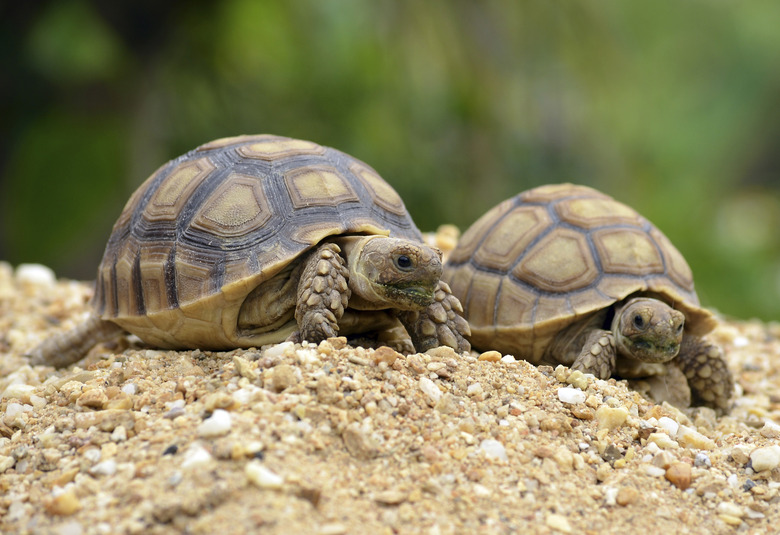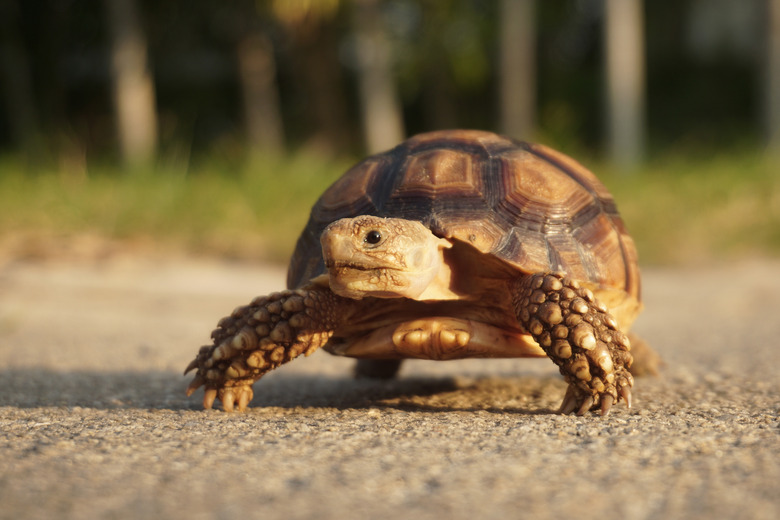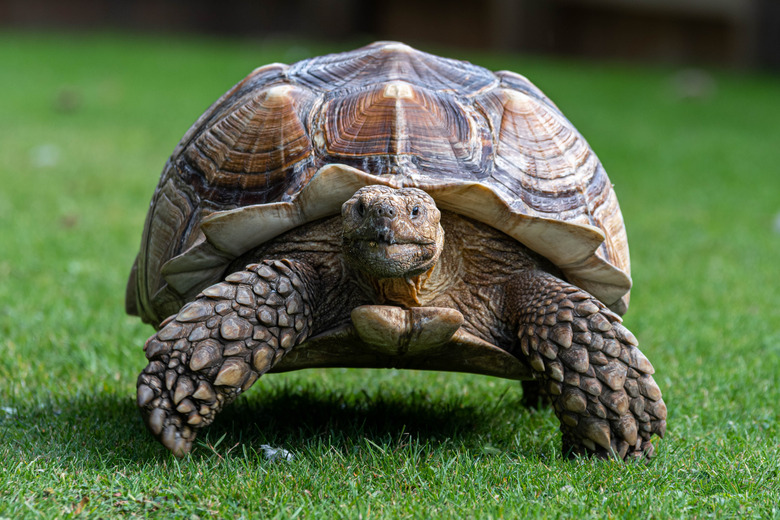The Difference Between Male & Female Sulcata Tortoises
The Geochelone sulcata, or African spurred tortoise, is also commonly called by other names: the spurred tortoise, the African spurred thigh tortoise, the sulcata tortoise, and the grooved tortoise. This tortoise's habitat extends across North Africa's Sahara Desert from Mauritania to Eritrea. Although male and female sulcata tortoises look alike in many ways, they can be distinguished by several sulcata tortoise gender differences, including size, behavior, and certain features.
Male vs. female sulcata tortoise size
Male vs. female sulcata tortoise size
Size is one reliable way to tell if you have a sulcata tortoise girl or boy. Like many species in the animal kingdom, male spurred tortoises are significantly larger than females. Male adults can grow to be 30 inches long and weigh as much as 220 pounds, while adult females can be as large as 18 inches long, weighing over 130 pounds. In fact, spurred tortoises are the largest land tortoises in the world. The only tortoises that are larger live on islands: Galapagos and Aldabra tortoises.
Tortoises vs. turtles
Tortoises vs. turtles
While many people use the terms "tortoise" and "turtle" interchangeably, they are technically different. Tortoises live mostly on land, while turtles are more adapted to live in water at least part of the time. African spurred tortoises live in the desert where there is very little water, so they are rightfully referred to as tortoises.
Turtles and tortoises are the only species that have backbones and also have shells. Their shells, which are made of between 59 and 61 bones, are covered by scutes, which are plates made of keratin, like very strong fingernails. The shells have different shapes, however. Turtle shells are more streamlined to help them swim in water, while tortoises have more curved, domed shells.
Their legs are very different too. Turtles have legs that are more like flippers to help them swim. While tortoises' front legs are like clubs, their back legs are thick and sturdy to help them support their heavy weight.
Male vs. female sulcata tortoise behavior
Male vs. female sulcata tortoise behavior
It is hard to tell male spurred tortoises from females by appearance alone when they are born and while they are young, but certain behavior is evident from an early age. While both males and females fight, males are much more aggressive, even from birth. When one tortoise attacks another, they are almost always males. Sometimes, one male tortoise will mount another male just to show dominance. Male sulcatas will also flash their genitals, leaving no question as to their gender.
Male vs. female physical characteristics
Male vs. female physical characteristics
As the spurred tortoise grows, it can be seen that the underside shell, called the plastron, is flat in the female but concave in the male. The anal scutes, which are located on the plastron near the tail, form a V shape but are flared in the male and narrower in the female. Attached to the plastron but visible from the front of the tortoise under the head are the gulars, which are larger in the male. He uses them to ram other males and try to flip them over.
Male vs. female grooved tortoise reproduction
Male vs. female grooved tortoise reproduction
When the weather is very cold or very hot, grooved or sulcata tortoises are inactive and tend to tuck themselves into their burrow, which can be up to 10 feet deep. They become active again during rainy seasons. Typically, males and females mate during the February and March rains. The gestation period, during which the female carries her eggs, lasts around 60 days, and then the female digs four or five nests before deciding which one to lay her eggs in. The cluster of eggs is called a clutch and can contain 30 or more eggs.
After laying her eggs, she covers them, and they will incubate for around eight months. A few days after a rain, the hatchlings will come out of their eggs. It can take the pale yellow male and female hatchlings several days to reach the top of the nest.
Although hatchlings are only 2 or 3 inches long, they can grow to be 10 inches in just a few years if they are not captured to be sold as pets. Sulcata tortoises do not reach maturity until they are 15 years old, so captured grooved tortoises usually do not reproduce, which makes them vulnerable to extinction.


